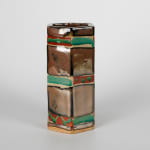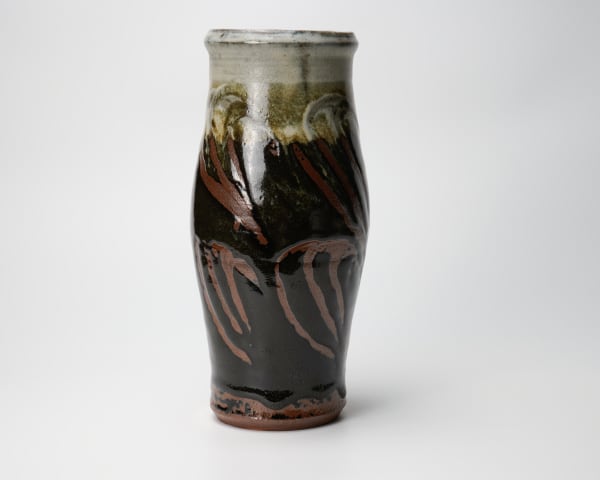Hamada Shoji 濱田庄司 1894-1978
Further images
-
(View a larger image of thumbnail 1
), currently selected., currently selected., currently selected.

-
(View a larger image of thumbnail 2
)

-
(View a larger image of thumbnail 3
)

-
(View a larger image of thumbnail 4
)

-
(View a larger image of thumbnail 5
)

-
(View a larger image of thumbnail 6
)

-
(View a larger image of thumbnail 7
)

-
(View a larger image of thumbnail 8
)

-
(View a larger image of thumbnail 9
)

-
(View a larger image of thumbnail 10
)

Hamada Shoji was a Japanese potter and artist famous for his foundation of the Japanese folk art movement of the 20th century. In 1920, Yanagi Soetsu, Kawai Kanjiro and Hamada Shoji co-founded the Mingei movement, which was an artistic and philosophical movement that sought to preserve and promote the traditional crafts of Japan. The Mingei movement emphasized the importance of everyday objects and the beauty of simplicity, rejecting the ornate and overly-decorative styles that were popular at the time. Hamada, Kawai, and Yanagi believed that the best crafts were those that were made by hand, with respect for the materials and traditions of the craft. The movement was far reaching, inspiring synonymous movements towards studio pottery in the Western craft, art and design scene in the 20th century.
Hamada was also a teacher and mentor to many young potters. His passion and dedication to his craft inspired many others to follow in his footsteps and continue the Mingei tradition. Today, Hamada Shoji is recognized as one of the most important figures in the history of Japanese ceramics. His work is widely admired for its beauty, simplicity, and respect for traditional forms. For his contribution to the international pottery scene, he was awarded the title of a Living National Treasure. Hamada’s legacy continues to inspire potters and craftsmen around the world.
In this vase, Hamada uses this six-sided mold-impression as a palette for a gorgeous display of color, inspired by lesser-appreciated Okinawan folk pottery tradition. Hamada initially visited Okinawa on his honeymoon, and often thereafter in the wintertime. The influence exerted by the Okinawa tradition may have been reinforced by his, no doubt, exhilarating romantic memory.












